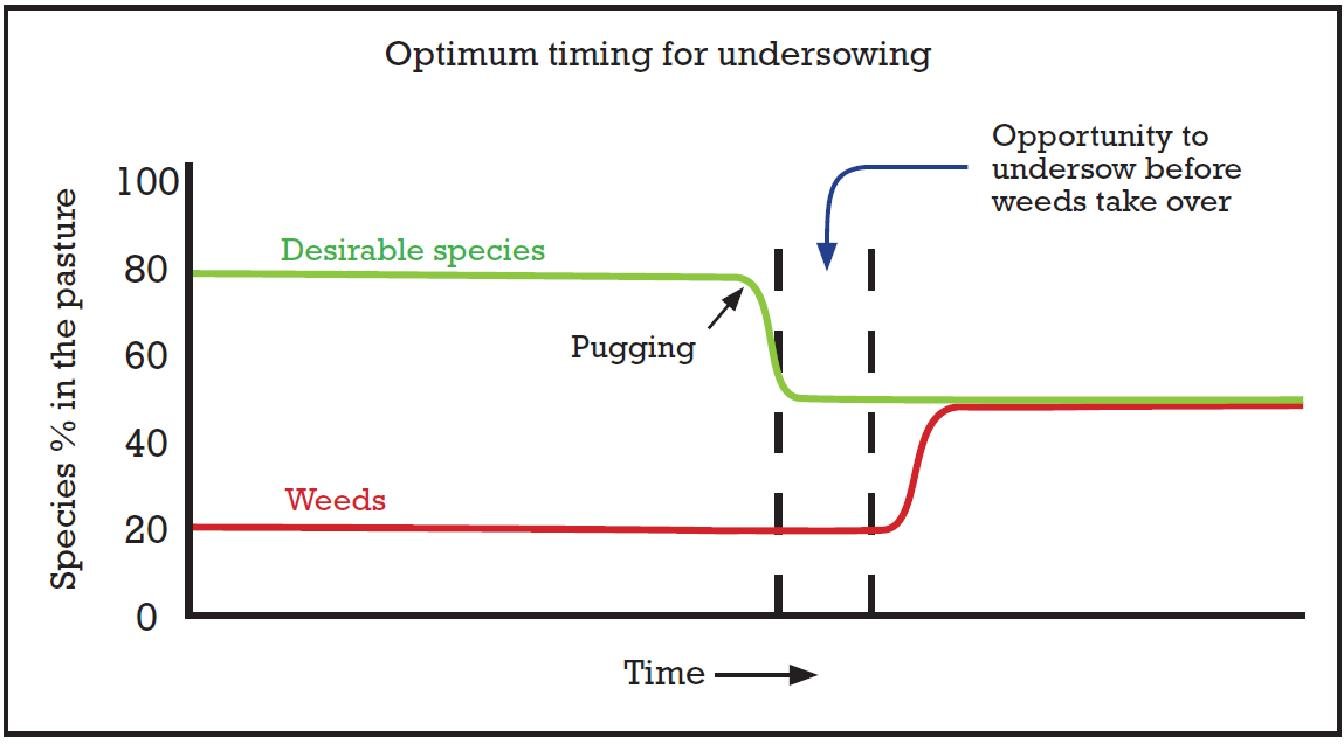Undersowing golden rule: get the timing right
The continual wet weather in the Southern South Island means pasture damage on farms, which needs repaired to keep your property growing to its potential. Fast, and relatively cheap, undersowing lets you re-seed areas damaged without losing much feed in the process.
But undersowing can also be a waste of money if it’s not timed right. The single most important step to success with undersowing is getting your new seed into the ground before weeds have colonised the open patches of soil. It’s a race between you and the weeds in your soil.
Weeds will take hold faster than many people realise; you may only have 3-4 weeks to beat them. After that, the gains from undersowing are usually much less, and you may be best to spray herbicide before drilling, or put the paddock into crop.
The diagram below illustrates just how quickly the situation can change, as the balance of plant species in a damaged paddock tips from sown ryegrass and clover to weeds.

How to sow
For smaller bare gaps, e.g. gateways, grass seed can be oversown or broadcast. A higher sowing rate will be required, e.g. 30 kg/ha, because the establishment rate is poorer than drilling.
For larger areas, mark damaged areas on a farm map, and either direct drill yourself or give the map to the contractor to undersow (provided damaged areas are level enough, otherwise surface cultivate first).
Where pugging is severe, consider full renovation, either through a summer crop or in irrigated areas via grass to grass in spring.
What to sow
All ryegrasses can be sown, from perennial through to Italian, but the faster establishing they are the better. Sow ryegrass at 10–15 kg/ha for thin pasture and 15-20 kg/ha for severe damage.
Fast establishing pasture cultivars like Shogun hybrid ryegrass are ideal for undersowing, because they establish rapidly - so compete well against existing plants and germinating weeds.
Italian ryegrass like Tabu+ is ideal for undersowing paddocks which will be cropped in next 18 months; Shogun will last 3-5 years.
_300dpi.jpg?height=481&width=980)
Severe pugging can kill a pasture. Here damage was caused by dairy cows behind a break fence (left) during heavy overnight rainfall. (Photo taken 4 months later.)

